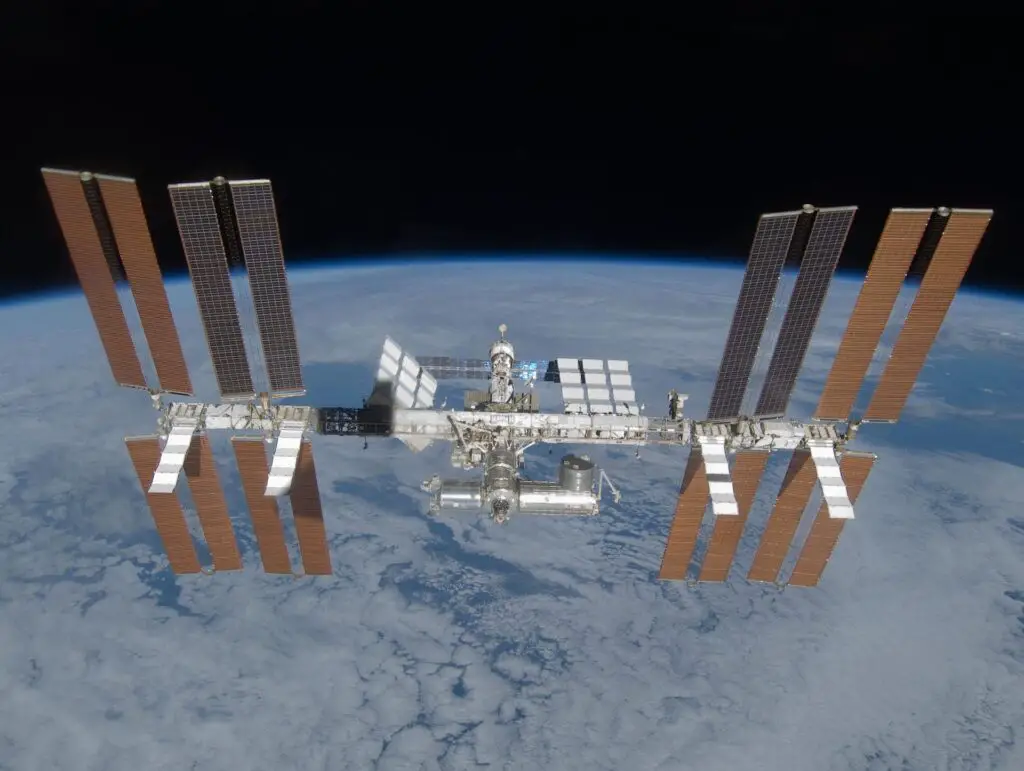A new study just revealed that the International Space Station (ISS) is polluted with massive amounts of harmful chemicals. Scientists finalized this study by analyzing the dust samples returned to Earth from the ISS’s air filtering system. Further analysis showed that the concentration of the chemical substance on the space station surpasses the dust that exists on the floors of homes in the United States and Western Europe.
The outcome of this research may appear terrifying to the well-being of the crew aboard the space station. However, scientists announced that the crew aboard the orbiting laboratory shouldn’t worry yet about the pollutant in the station.
“While concentrations of organic contaminants discovered in dust from the ISS often exceeded median values found in homes and other indoor environments across the US and western Europe, levels of these compounds were generally within the range found on Earth,” said Stuart Harrad, study co-author from the University of Birmingham, in an official statement.
What you should know about the harmful chemicals
Scientists studied the vacuum bags retrieved from the ISS HEPA filters for this research. The space dust obtained from the research was compared alongside the organic pollutants in American and Western European homes. Several chemical pollutants were spotted in the space dust samples.
Some of these varieties of pollutants include polybrominated diphenyl ethers (PBDEs), hexabromocyclododecane (HBCDD), novel brominated flame retardants (BFRs), organophosphate esters (OPEs), polycyclic aromatic hydrocarbons (PAH), perfluoroalkyl substances (PFAS), and polychlorinated biphenyls (PCBs). Separating the space dust into different categories, researchers realized that electrical and electronic equipment, furniture textiles, forms, and build insulation are the actual cause of BFRs and OPEs.
Scientists discovered that these compounds are also helpful in ensuring fire safety regulations aboard the space station. PAHs come from hydrocarbon fuels released during the combustion process. PCBs are mostly deployed in electrical equipment, building, and window sealants. PFAs are found in fabrics and clothing.
They are also referred to as forever chemicals. The scientists that conducted the study revealed that some materials were banned from usage due to their chemical impacts on humans. UNEP Stockholm Convention revealed that some of these substances were specifically made for Persistent Organic Pollutants (POPs). However, PAHs are outlined as part of human carcinogens.
How these chemical Pollutants managed to reach the International Space Station
Harmful chemical pollutants are common on Earth as chemicals are part of our everyday life. However, scientists marvel at the existence of these dangerous chemicals in the orbiting laboratory. The researchers that conducted this study revealed that the pollutants aboard the ISS came from astronauts’ personal use such as MP3 players, medical gadgets, cameras, clothes, tablet computers, and other items.
However, the study revealed that some of these chemical contaminants came from the ISS’s infrastructure. The Air filtering system aboard the station will continue to protect the crew from hazardous substances. Scientists say that some systems continue to recirculate the air at about eight to ten changes per hour onboard the orbiting laboratory.
This filtering process helps in getting rid of carbon dioxide and gaseous trace pollutants. However, scientists are still wondering about the extent the system removes chemicals such as BFRs. The authors of this study hope that their analysis will assist engineers in building more sustainable space stations in the future.
“Our findings have implications for future space stations and habitats, where it may be possible to exclude many contaminant sources by careful material choices in the early stages of design and construction,” said Harrad.
The researchers published their findings in the journal Environmental Science and Technology Letters.
Conclusion
Chemical pollutants can be harmful to humans both on Earth and in the weightless environment of space. After analyzing some space dust returned from space, scientists concluded that chemical pollutants exist in the orbiting laboratory. While astronauts aboard the station will not be affected by these pollutants, scientists believed that their finds will help improve the designs of future space stations that will be placed in our orbit and beyond. What do you think about this interesting scientific discovery?





